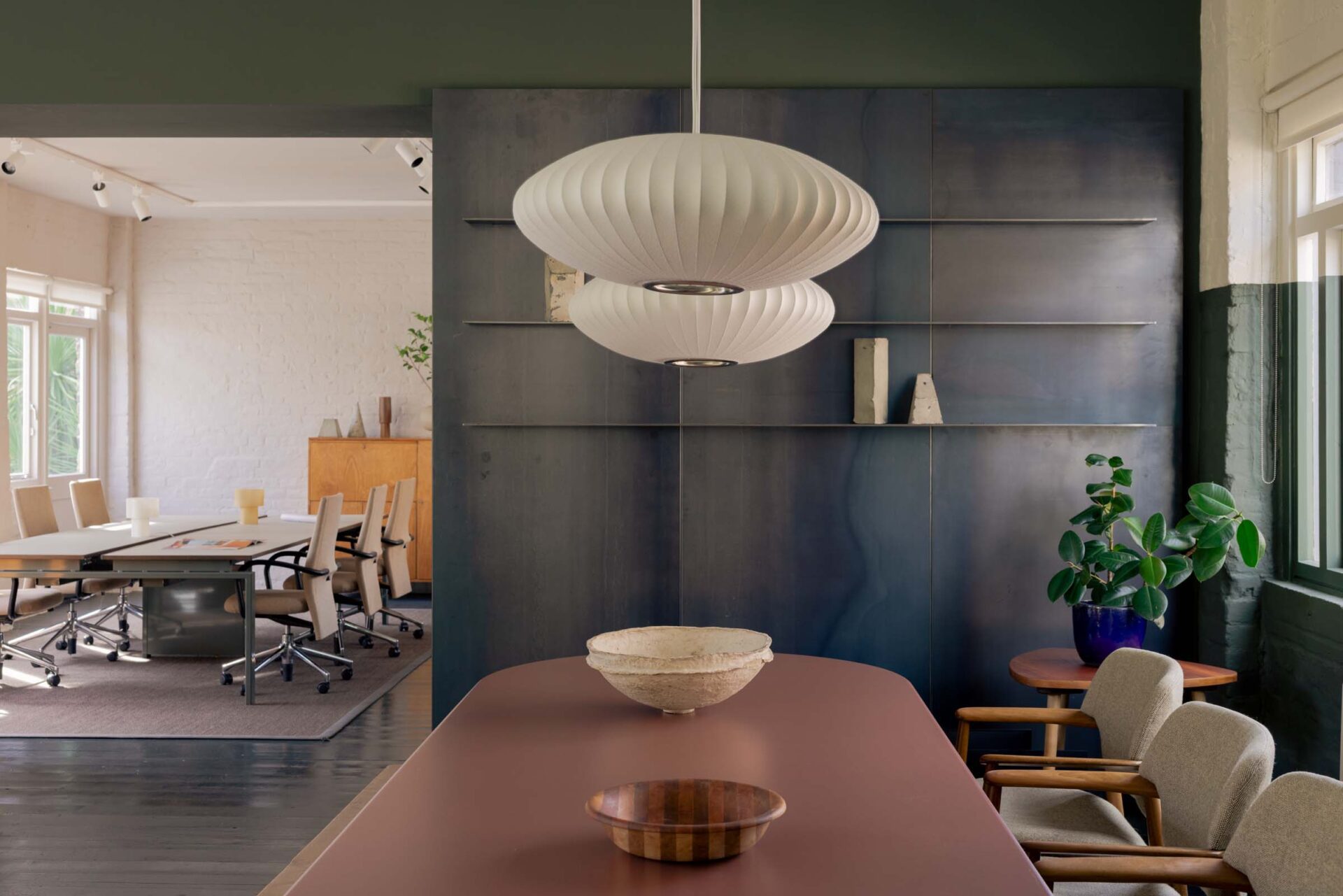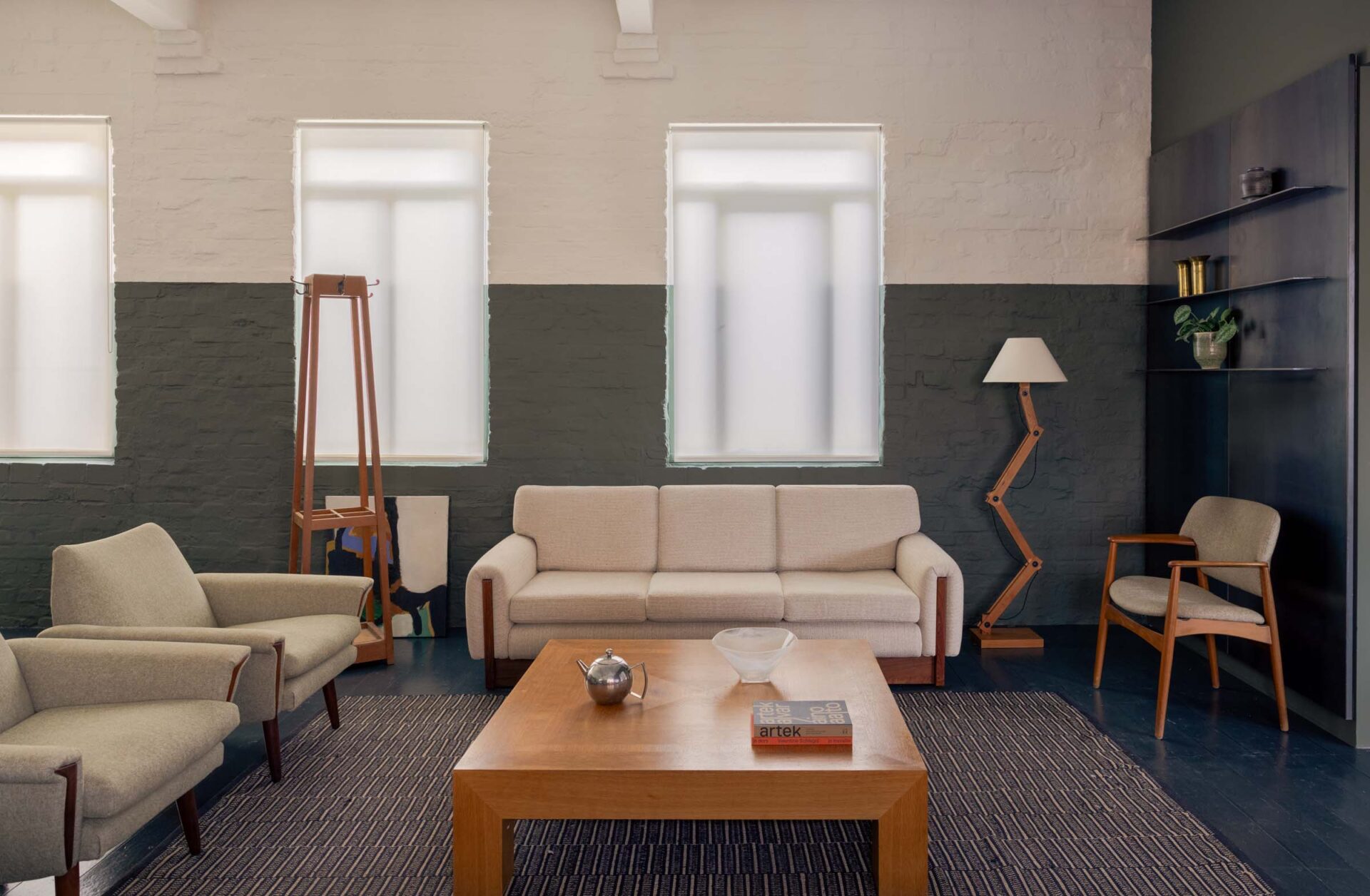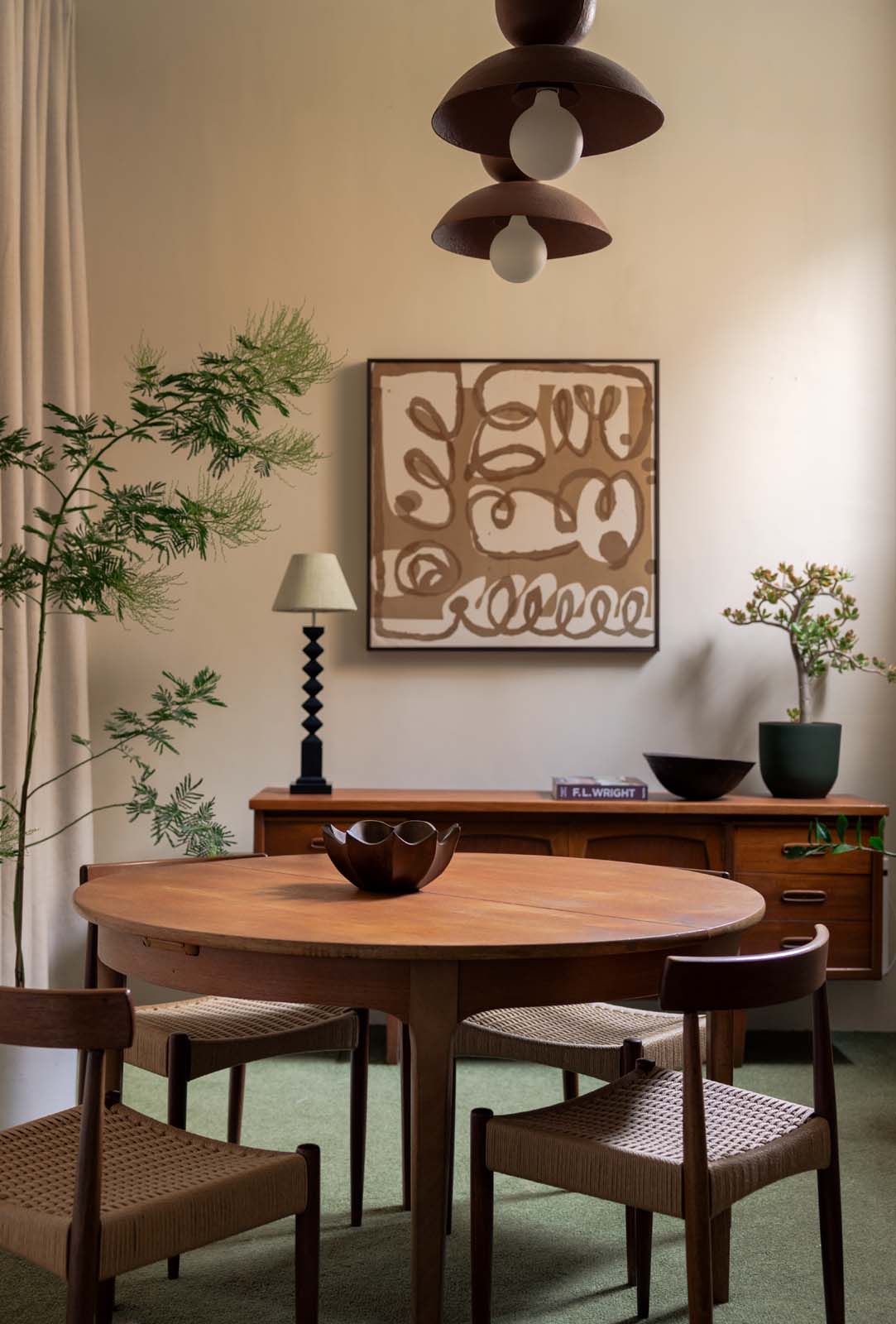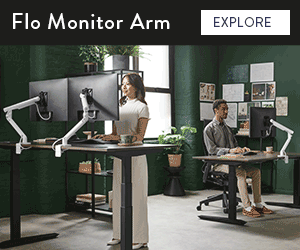
Meanwhile, back at HQ: Interiors studio Duelle used colour and texture – and carefully curated mid-century furniture – to create a warm and welcoming headquarters for paint company Coat
When casting around for a permanent HQ, eco-friendly paint company Coat alighted on a Victorian warehouse in London’s Clerkenwell. The company was drawn to the generous proportions, large windows, high ceilings and industrial character, but knew that it wanted to reimagine its white interiors. The founders, Rob Abrahams and Rob Green, asked interior design studio Duelle to work on the space, while keeping in mind Coat’s affinity with mid-century modern aesthetics and mindful approach.

The site already had a great architectural shell so the founders of Duelle, Melanie Liaw and Micaela Nardella, embraced its original features, such as existing blackened steel panels on the walls and staircase, and focused on colour, lighting and soft finishes of carpets and bespoke curtains. Moreover, the designers tapped into Coat’s ethical ethos by sourcing vintage furniture from trusted suppliers and upcycling where possible, as well as creating a design that maximised daylight and open-plan, airy spaces.
Split across two levels, the main work and lounge spaces are housed on the light-filled first floor. At the back there are dedicated workspace for 15 team members. On the ground floor, a private meeting room is insulated with sound-absorbing finishes such as fitted grass-green carpet by German brand Object Carpet and bespoke full-height, acoustically interlined curtains.

“The space had to serve the needs of both a studio and an office,” says Coat’s co-founder Abrahams. “Most of the team are desk-based at computers, so we wanted a work area that was functional but also beautiful. We didn’t want to allocate desks, preferring people to move around and shift their positions to keep mental agility. We also wanted a studio area for our own colour work and also a space where our interior design and architect clients can visit for meetings and exploratory work.”
To answer Coat’s brief, Duelle made sure that nothing felt like “conventional office furniture”. To that end, Liaw and Nardella took great care to source and have refurbished mid-century furniture, such as elegant Vitra AC1 chairs by Italian designer Antonio Citterio acquired from an office reuse supplier before being reupholstered in a soft peach tweed, a sofa refurbished with a deeply textured cream fabric by Kvadrat, and mid-century armchairs reupholstered in Sahco & Kvadrat’s ‘Clay’, a special-edition fabric made with architect Vincent Van Duysen.

Recycled materials were also key to the concept, with Bohobo London’s sculptural table lamps – made using oyster and mussel shells sourced from the restaurant waste recycling industry – adding warmth to workspace desks. They also introduced iconic George Nelson Saucer Bubble lamps, which add a soft glow to the communal dining area.
The interior designers made sure to showcase three of Coat’s bestselling colours, from the crisp dark green of ‘Nomad’ in the social spaces to the warm off-white ‘Pampas’, which dresses the high level and ceiling, enhancing the natural warmth and light of the space. In the desk area both the walls and ceiling are painted in a single serene hue called ‘Sunday Soul’. “This colour really changes with the light throughout the day, creating a cosy and contemporary working environment with just enough colour to feel impactful,” say the designers.

The ground-floor meeting room features bespoke recycled paper pulp pendant lights made by London designer PaleFire, which are painted in a muted red-brick colour called ‘Old Street’. Duelle also transformed a 3m-long 1990s boardroom table, which might otherwise have been ready for the landfill, by having an expert refinisher sand, fill and paint it in Coat’s ‘Old Street’. “The colour is both high impact and earthy, with a finish that feels in kind with contemporary Italian furniture on the market today,” say the designers.
Coat were well pleased with Duelle’s fresh approach and their meeting of minds. “Beyond the design elements, sustainability and wellbeing were key,” says Abrahams. “We didn’t want a ‘box fresh’ office design from a typical company. Sourcing recycled and upcycled furnishings, using Coat paint products and paying attention to light and biophilic elements were all super important to us. Overall, the space was designed to feel fluid and flexible, without the rigidity of a traditional office – which just doesn’t feel modern anymore.”
Images by Mariell Lind Hansen
As featured in OnOffice 162, Spring 2023. Read a digital version of the issue for free.



























